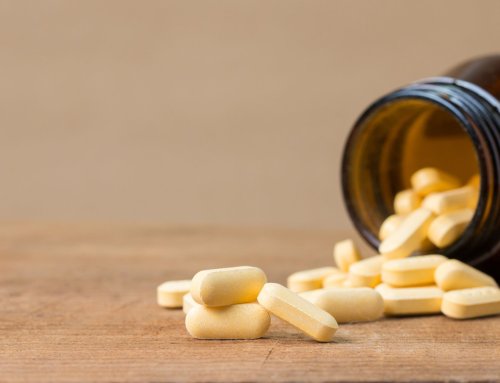When you start asking important questions like “how long does alcohol stay in your system?” it’s a sign that you’re ready for change.
This guide breaks down how your body handles alcohol, how potent different types of alcohol are, and what factors can make alcohol stay in your system longer. Being aware of this can help you make wise choices and know when to seek help.
How Your Body Processes Alcohol
When you drink alcohol, your body works hard to get rid of it. It’s treated like a poison because it can hurt you if it stays too long. Your body mostly uses your liver to break it down. Right after you take a sip, the alcohol quickly moves into your bloodstream through your stomach and small intestine. Then your liver starts to clean it out.
According to a paper published in Clinical Liver Disease by the American Association for the Study of Liver Diseases, about 90–98% of the alcohol you drink is broken down in your liver.1 The rest leaves your body through your breath, sweat, and urine.
Here’s what happens step-by-step:
Absorption
Right after you drink, about 20% of the alcohol goes straight through your stomach into your blood. The other 80% gets absorbed through your small intestine.2
Distribution
Once it’s in your blood, alcohol travels all over your body, to your brain, your heart, and other organs. This is why you start feeling the effects, like feeling relaxed, dizzy, or sleepy.
Metabolism (Breaking it Down)
Your liver does most of the hard work. It uses special tools called enzymes.2
- First, alcohol dehydrogenase (ADH) changes alcohol into a harmful chemical called acetaldehyde.
- Then, aldehyde dehydrogenase (ALDH) quickly changes acetaldehyde into a harmless substance called acetate, which your body turns into water and carbon dioxide.3
Elimination
Your body gets rid of alcohol by breathing it out, sweating it out, peeing it out, and breaking it down completely inside you.
Important to Know
The speed at which you break down alcohol is mostly constant. A study from the journal Alcohol Research & Health says that the average person processes alcohol at about 0.015 grams per deciliter per hour.4 That’s why drinking coffee, taking a cold shower, or trying other tricks won’t make you sober faster.
Different Types of Alcohol and Their Potency
When you drink, not all alcohol is the same. Different drinks have different potencies – that means how strong they are. Potency depends on how much pure alcohol (ethanol) is inside the drink.
Beer
Beer is one of the weakest alcohols you can drink. Most beers have about 4% to 6% alcohol. Some strong craft beers can go up to 12%, but that’s rare.
- Example: A regular bottle of beer (12 ounces) usually has about the same alcohol as a small glass of wine.
Wine
Wine is stronger than beer. Most wines have about 12% to 15% alcohol.
- Red wine and white wine are close in strength.
- Some wines, like port or sherry, are even stronger, around 18% to 20% alcohol.
Hard Liquor (Spirits)
Liquor is much stronger than beer or wine. Things like vodka, rum, whiskey, tequila, and gin usually have about 40% alcohol.
- Some liquors are even stronger. For example, Everclear can have up to 95% alcohol!
Cocktails and Mixed Drinks
When you mix alcohol with juice, soda, or other flavors, it’s called a cocktail. The potency of a cocktail depends on how much alcohol you pour in.
- Some cocktails are very light.
- Others, like Long Island Iced Tea, can be packed with several shots of liquor and be super strong.
Alcohol and drug addiction symptoms include using the substance regularly, craving it constantly, and needing more over time. You may spend money on it even if you can’t afford it, miss work, or cut back on social activities. Despite the problems it causes, you might continue using and engaging in risky behaviors, like driving under the influence. Addiction can take up a lot of time, and despite trying to quit, you may struggle and experience withdrawal symptoms.
Factors That Influence How Long Alcohol Stays in Your System
Alcohol doesn’t leave your body at the same speed for everyone. Different things about your body can change how long alcohol stays in your system.
Your Weight and Body Fat
If you weigh more, alcohol usually spreads out more through your body, which can make it a little weaker. If you have a lot of body fat, alcohol can stay longer in your system because fat holds alcohol differently than muscles do.
Scientists explain that alcohol doesn’t go into fat as easily as it goes into muscles, so people with higher body fat can have more alcohol hanging around in their blood.5
Your Biological Sex
Whether you are male or female also matters.
- Women usually have less water in their bodies than men. Since alcohol mixes with water, women often feel the effects of alcohol more quickly.
- Women also have lower levels of an important enzyme, which is ADH. It helps break down alcohol in your stomach. Because of this, more alcohol gets into a woman’s bloodstream compared to a man who drinks the same amount.6
Your Genes
Your genes (the DNA you get from your parents) also make a difference. Some people are born with special changes in the enzymes that break down alcohol.
- Many people of East Asian descent have a variation in the gene that makes ALDH. This means their bodies have a hard time breaking down acetaldehyde, a toxic substance that forms when your body processes alcohol, as mentioned above.
- When acetaldehyde builds up, it can cause a red face (flushing), a fast heartbeat, and nausea.
- A study in The Pharmacogenomics Journal explained that this genetic variation (ALDH2*2 allele) leads to slower alcohol breakdown and stronger bad reactions after drinking.2
Remember:
- You cannot control your genes, sex, or body makeup.
- Drinking slower, eating food before drinking, and knowing your limits can help you stay safer.
How Long Can Alcohol Be Detected in Your System
Different tests can detect alcohol in your body for varying durations:
- Blood Tests: Detect alcohol for up to 12 hours after consumption.
- Breath Tests: Can identify alcohol for up to 24 hours.
- Urine Tests: Standard tests detect alcohol for 12–48 hours, while EtG tests can detect it for up to 3 days.
- Saliva Tests: Detect alcohol for 24–48 hours.
- Hair Tests: Can reveal alcohol use for up to 90 days.
Studies explain that your body takes about one hour to break down one standard drink.1 A “standard drink” usually means:
- 12 ounces of beer (5% alcohol)
- 5 ounces of wine (12% alcohol)
- 1.5 ounces of liquor (40% alcohol)
Quick tip: Always pay attention to what you’re drinking. A big glass of wine can sometimes have two servings in it. Same with fancy cocktails. Some can have three shots hidden inside!
Understanding these factors can help you make informed decisions about alcohol consumption and its effects on your body.
TasteRecovery is a powerful resource that connects you with trusted rehab centers across the country. We can guide you to professional help where you can safely heal, learn about your body, and build a stronger, healthier future without alcohol.
Sources:
- Samir Zakhari. (2006). Overview: How Is Alcohol Metabolized by the Body? Alcohol Research & Health, 29(4), 245. https://pmc.ncbi.nlm.nih.gov/articles/PMC6527027/
- Edenberg, H. (2007). The Genetics of Alcohol Metabolism: Role of Alcohol Dehydrogenase and Aldehyde Dehydrogenase Variants. Alcohol Research & Health: The Journal of the National Institute on Alcohol Abuse and Alcoholism, 30(1), 5–13. https://www.researchgate.net/publication/6122476_The_Genetics_of_Alcohol_Metabolism_Role_of_Alcohol_Dehydrogenase_and_Aldehyde_Dehydrogenase_Variants
- Cederbaum, A. I. (2012). Alcohol Metabolism. Clinics in Liver Disease, 16(4), 667–685. https://doi.org/10.1016/j.cld.2012.08.002
- Hindmarch, I., Kerr, J. S., & Sherwood, N. (1991). The effects of alcohol and other drugs on psychomotor performance and cognitive function. Alcohol and Alcoholism (Oxford, Oxfordshire), 26(1), 71–79. https://pubmed.ncbi.nlm.nih.gov/1854375/
- Lieber, C. S. (1997). Ethanol metabolism, cirrhosis and alcoholism. Clinica Chimica Acta, 257(1), 59–84. https://doi.org/10.1016/s0009-8981(96)06434-0
- Frezza, M., di Padova, C., Pozzato, G., Terpin, M., Baraona, E., & Lieber, C. S. (1990). High Blood Alcohol Levels in Women. New England Journal of Medicine, 322(2), 95–99. https://doi.org/10.1056/nejm199001113220205








